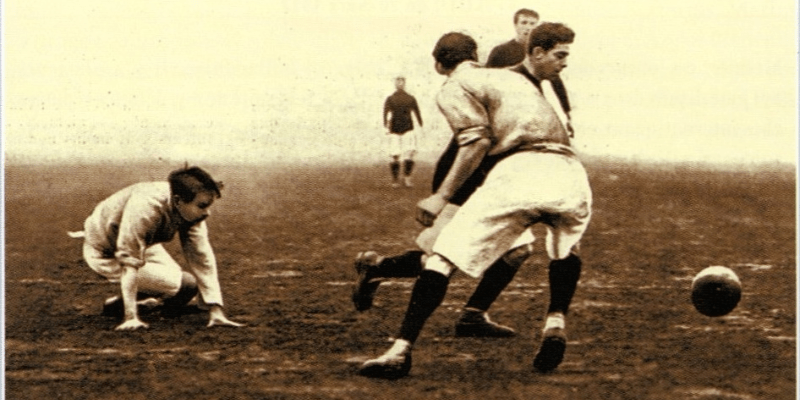When you think of the France national team—“Les Bleus”—images of World Cup glory, elegant passes, and unforgettable goals usually come to mind. But even the mightiest nations have dark chapters. In the span of over a century, France has suffered one defeat that still stands out in the record books—and in the collective memory of football historians. Today, ZaneyStrike will accompany you to explore the story behind the biggest loss in France national team history, unpacking context, aftermath, statistics, and lessons.
The red-letter defeat: Denmark 17–1 France, October 1908

Match overview and context
On 22 October 1908, during the London Olympics, France found themselves facing a Denmark side that would inflict the heaviest defeat in French international history. The final score: 17–1 in favour of Denmark, played at the Shepherd’s Bush Stadium in London. This result is officially recorded as France’s largest defeat ever.
At that time, international football was in its infancy. Tactics were rudimentary, fitness levels varied wildly, and national federations were still organizing structures. France, in particular, had limited experience on the global stage. The Denmark side, meanwhile, was among Europe’s strongest, with forward Sophus Nielsen in prolific form.
Who stood out — key players and goals
Denmark’s attack was ruthless. Sophus Nielsen alone netted 10 goals, a staggering individual tally that still echoes through football folklore. The Danish forwards overwhelmed a French defense that had little preparation or cohesion. For France, Émile Sartorius scored the solitary consolation goal.
The match lineups reveal how outmatched France was—some players were more used to regional matches than high-stakes international tournaments. Denmark, conditioned and sharper, capitalized relentlessly.
Why the rout was so extreme
Several factors combined to make this catastrophe possible:
- Tactical naivety: France lacked a cohesive defensive system; formations bled open under pressure.
- Preparation gap: Travel, training, and familiarity with international competition were new challenges for the French side.
- Psychological collapse: Once the goals started flowing, France presumably lost structure and confidence, compounding their woes.
- Dominant opposition: Denmark was not just good—they were among the pioneers of organized football excellence in Europe.
That match has never been approached in its scale of humiliation in French history.
Other heavy losses: how this defeat compares
While the 17–1 defeat remains the unsurpassed low for France, other grim results linger in the archives:
- 0–15 vs England Amateur (1 November 1906): This was France’s largest home defeat, however it came against the England amateur side, not the full national team.
- 7–0 vs Italy (22 March 1925): In a later era, France was thumped by a strong Italian squad—a brutal but nowhere near the scale of the Denmark massacre.
- Other lopsided margins appear in early 20th-century friendlies, but none approach the 16-goal margin of that 1908 debacle.
As the decades progressed, France’s level rose steadily: by mid century, such blowouts became unthinkable.
Legacy and impact on French football

A turning point and warning
The 17–1 loss served as a brutal lesson. French administrators and coaches realized that ambition alone would not suffice—structure, strategy, coaching, player development all needed professionalizing. While it would take decades, France gradually built the foundations (youth academies, better management, tactical schooling) that would make it a modern powerhouse.
Myth and memory
This match is more myth than memory now. Even France’s own record-keeping lists it as their largest defeat, but details, narratives, and firsthand accounts are fragmentary. It lives in statistical tables, occasionally invoked as a historical footnote when discussing humiliations in football.
Resurgence to glory
Look where France is today: two World Cups (1998, 2018), multiple European trophies, a conveyor belt of talent (Mbappé, Griezmann, Benzema, etc.). The trajectory.
The statistics behind the record
| Category | Data / Value |
| Date of match | 22 October 1908 |
| Venue | Shepherd’s Bush Stadium, London (neutral site) |
| Scoreline | Denmark 17 – 1 France |
| Goal scorer (France) | Émile Sartorius |
| Top scorer (Denmark) | Sophus Nielsen |
| Margin | 16 goals |
| France’s largest ever defeat | Yes — remains top of that list |
| France’s largest home loss | 0–15 vs England Amateur, Nov 1906 |
In modern record compendia, the largest defeat for France is still officially 17–1 against Denmark. France’s current era of successes only makes that match stand out even more starkly.
Why this still matters

In the world of football lore, big defeats shape narratives. The biggest loss in France national team history is not just a freak factoid—it’s a mirror reflecting the humble origins of a great football nation. It underscores how far France has come:. Every great football nation has had its darkest days—and France’s deepest wound may actually be one of its greatest motivational stories.
Final Thoughts
The biggest loss in France national team history remains the 17–1 drubbing by Denmark in 1908, a match that resonates less in collective memory than in statistical archives. That catastrophic result became a turning point—both a cautionary tale and a milepost on France’s journey to modern football greatness.
Whether you’re chasing tri, this episode highlights the fragility and potential in the sport’s early days. If you’d like to explore related records (biggest wins, strange matches, or comparative humiliations in other national squads), ZaneyStrike is ready to dig in with you—just ask.






